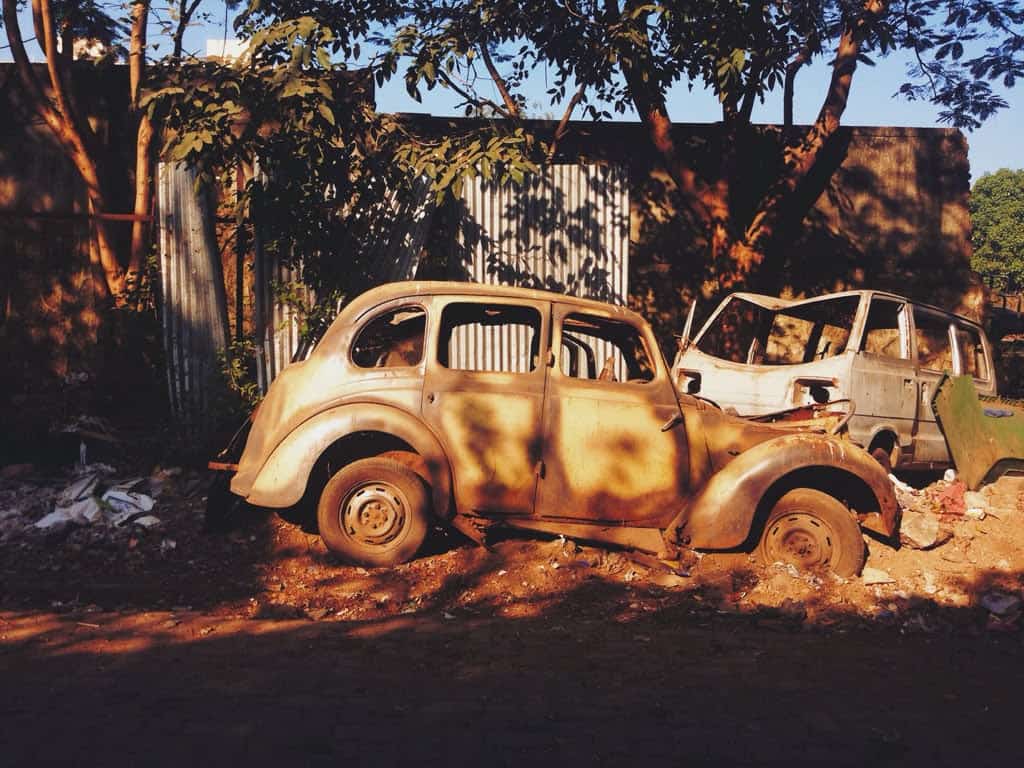In 2021, Mumbai was ranked 5th in global vehicular congestion by the TomTom Traffic Index. Rates of car ownership in the city are growing — at roughly 10% per annum — against the backdrop of traffic congestion and a severe lack of parking space. For every vehicle in the city, at least three locations for parking are required. As car ownership increases, the need for parking spaces will grow three times that rate, roughly 30%.
In apprehension of such a situation, the Brihanmumbai Municipal Corporation (BMC) in January 2021 put together a committee of 15 experts and citizens to form the Mumbai Parking Authority (MPA). This was the first time that urban planners, transport policy experts and civil society representatives had collaborated to re-think policy in Mumbai.
Mumbai’s parking policy, before the parking authority was set up, was supposed to lapse in March 2021, but was extended till March 2022 to prepare the new policy for implementation. Initially formed in 2019, the committee’s work was halted due to the pandemic.
The MPA is still working on its legal formation and is currently just a proposed authority functioning under the state’s Roads and Traffic Department. They have proposed a chapter under relevant sections of the BMC law, which is awaiting the Municipal Commissioner’s approval. Once approved there, it will go to the state for its inclusion in the law.
To understand the developments and policy changes made in the last year (2021-2022), Citizen Matters spoke to Prachi Merchant, who is leading the team of professionals appointed by Roads & Traffic Department of BMC to set up Mumbai Parking Authority.

What initiatives have been executed by the Mumbai Parking Authority in the past year? What are some of their priorities?
We are carrying out studies and planning detailed implementation in some pilot wards. We note our observations to see what works and wait for those proposals to be passed by the BMC. Currently one priority is the legal formation of the authority, which is the most crucial one and without which we would have no standing.
The second one is the draft parking policy, which is now ready and has gone for approval to the BMC Commissioner.
The existing policy within the rules and traffic department is actually just a pricing policy. We have done extensive work to understand what the issues are throughout the city. Understanding also means taking inspiration from other cities, and what they have done to resolve parking issues, both within and outside India.
The most important thing we have done in the past year is formulating this draft policy for the ward parking management plan (WPMP).
We haven’t started the pilot implementation yet, but we have done a lot of groundwork for the four wards. We have identified four wards and three zones — eastern, western and island city. These are D ward** and G-South ward in the island city, S ward in the eastern suburb and K-west ward in the western suburbs.
These policies are ready to be implemented because we have received the No-Objection Certificate (NOC) for our ward traffic management proposal from the Mumbai traffic police.
London had introduced a congestion charge to discourage use of vehicles during peak hours in central London on weekdays. Does Mumbai plan on doing something similar? How has the ward parking management plan (WPMP) panned out?
We are focusing on going through each and every street to understand the parking behaviours, the characteristics of parking, congestion points, the demands at particular times of the day, and understanding off street parking occupancy. We then study the roadways, the roadway land use, and then propose our parking proposal which will include on-street pay and park.
So far we have worked on proposals in the pilot wards. Pay and park spaces are further classified into general pay and park, residential pay and park or special pay and park, which would also mean marking out no-parking zones, which the traffic police helps us with.
The Mumbai traffic police, under the Motor Vehicle Act, are supposed to issue an NOC to the MPA for proposed pay and park and no-parking zones as the traffic department has certain norms prescribed for no parking, which we have to incorporate in our road parking management plan. This means that five areas will be marked as no-parking zones (that is, on-street parking will not be allowed here) — junctions (as a safety norm, since they are most vulnerable for accidents), educational institutes, hospitals, bus stops, and finally, streets surrounding malls and other public parking lots.
The crux of the PMP lies in its enforcement, so we have devised a methodology for it.
Land is divided into A, B and C category: A is commercial, B semi-commercial and C is residential. Parking charges will be decided based on these categories. Parking in commercial areas will be most expensive, and relatively lower in residential areas. Although not entirely similar to London’s model, it tries to match demand and supply.
Read more: Interview: “People buy cars in Mumbai because they don’t have to think of parking cost”
It has been reported that D-Ward will soon have 6500 regulated parking spots; so what is the plan of action for suburbs? What are some of the challenges that come with planning for the suburbs?
Each ward comes with its own set of challenges which is why it is necessary to study each ward separately. D-ward is part of our pilot implementation and we have identified 6500 parking spots which we want to regulate.
We are currently working on nine laterals, which we’d like to complete as soon as possible.
1. Legal formation of MPA
2. Brihanmumbai Parking Policy (including pricing)
3. Ward Parking Management Plan
4. Enforcement
5. Signage and Marking
6. Mumbai Parking Pool – to bring all public and private spaces under one umbrella.
7. Communication and behavioural change – Marketing
8. Scrapyard identification – which is excluded from the parking space
9. Mumbai Parking IT interface: An app

How do you plan to accommodate green transportation? Will there be any reserved spots or reduced parking fees for EVs to encourage use?
We plan on installing charging stations in public parking lots to support the use of electric vehicles. However, we have not decided upon any pricing benefits so far. But the parking policy will be dynamic, and new amendments will be made every three years. As the demand for electric vehicle parking increases, we will definitely accommodate the needs of EVs.
What are some of the hurdles you expect to face, especially with regard to behavioural issues? How do you make people pay? Often there are violations by chauffeur-driven cars…
The pilot wards help us identify the behavioural and other trends in each of these wards. How much people are willing to pay will also greatly differ from ward to ward. But behaviour experts in our team have found that Mumbaikars are willing to spend some money if it means convenience. If they can have a hassle free experience, which saves them time, the citizens don’t mind spending.
Also, we are mainly looking at the car-owning population, so people are somewhat prepared for the related costs.
Behaviour and compliance with rules are all a part of our enforcement lateral. Parking contractors who will man on-street and off-street parking will help curb violation of rules by chauffeur-driven cars.
However, we want to try to minimise the role of the operators and want to make the process as digital as possible, eliminating the need for manual intervention. These days most cars are connected to Fastag, so that they can be automatically charged for toll payments and fees; similarly, they can also be fined through the same mechanism if any rules are broken. Right now, however, it is difficult to rule out manual intervention completely.
The Mumbai Parking Authority has created a central database of parking spots in each ward – how does this come into play? How can GIS mapping system curb illegal parking in the city?
We plan on developing a dynamic IT interface in the form of an app that will allow people to locate empty parking spots around them — whether of the BMC, MMRDA or even private. The interface would include everything that a citizen needs to know about parking. To do so, we are developing a central dashboard within BMC which would store information of the entire parking proposal using the mapping system.
GIS is usually used to store data over time and is a static interface, but our interface uses GIS to build a dynamic app with better user experience and increased usability. When you want to park your vehicle, instead of you looking around for an empty spot, the app can locate it for you, saving you time and also increasing surveillance to penalise people breaking the rules.
How do you plan to optimise parking spaces in the city, both public and private?
There is no acquisition of private land or property. We simply put private parking spaces on the map and the IT interface so they can be located. But we cannot control how and when they allow parking or how parking is priced.
We can’t force landowners to contribute their land to public parking, but if they do so voluntarily, it is a good revenue source, which is why some may choose to do it. Security is also an aspect that buildings need to consider.
With the new policies, will people be discouraged to buy new vehicles, once they have to think of parking costs?
The first intention is to encourage people to use the public parking lots (PPL). On-street parking is not regulated, so why will people use PPLs, they will prefer to park on the street for free. This keeps many parking spaces vacant adding to the parking space problem.
The number of cars to parking spaces ratio will never be equal, it is impossible to meet the current demands, but we can improve usage of public parking.
Discouraging car-ownership depends on various factors — building a robust public transport system followed by government interventions to incentivise low-emission commute, and finally policy changes like the parking management plan.
We have proposed measures for this, but they will have to be taken up by the state. The main objective is to reduce the burden on roads and ensure free flow of traffic.
** Errata: The previously published version of the article erroneously mentioned that B Ward was chosen as one of the wards for pilot implementation of the WPMP. This should be read as the D ward, and the correction has been made in all references. The error is regretted.